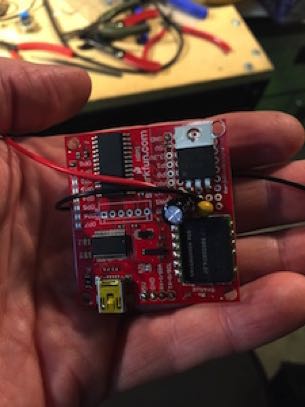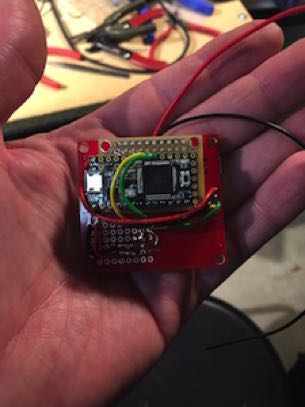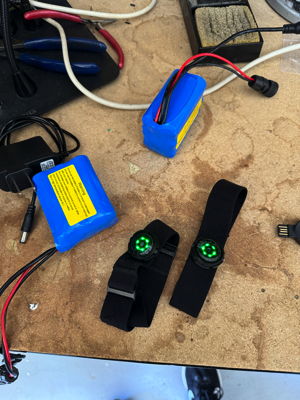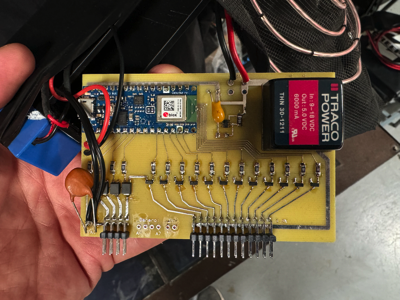Heart and Lungs - v4 (2024)
The heart and lungs project was my first EL wire project. Created in 2000, the design was based on actual human anatomy that I pulled from an anatomy coloring book. The animation mimics the beating of an actual heart with its two-stage rhythm.
In 2015, I made the third iteration of this project. The first two involved custom sequencers that I created. In 2015, I updated to an Arduino Teensy 3.1, adding my own custom board to handle switching for the EL wire. And for the first time, the Heart and Lungs will show my actual heart rate. The switch to Arduino made it easy to integrate with a Spark Fun board that can read heart rate data from a Polar chest strap.


The Sequencer
The Heart Rate Board
If you ever see me wearing this piece out on the playa, feel free to stop me and ask questions. I love to help other artists figure this stuff out.
Heart and Lungs - v3 (2015)
In 2024, I made the fourth iteration of this project. This version incorporated LED filament wires for everything except the lungs, which continued to use EL wire due to their length. The use of filaments allowed for much greater brightness than EL wire. It also allowed me to PWM the LED segments to alter their brightness. I initially tried to PWM all of the filaments. The controller allows only four hardware-based PWM channels at a time, so I wrote my own PWM routine initially. However, I abandoned that routine because of timing issues that occurred when the Bluetooth radios were active.

Because the Arduino controller had built-in Bluetooth, I decided to use a Bluetooth-based Polar optical heart-rate sensor. The controller scans for one of two Bluetooth heart-rate peripherals I used for the project. When it finds one of the peripherals, it connects to it, reads the heart rate value every second, and applies that value to the animation to alter its speed. When I turn off the active sensor, the controller goes back to a default animation speed, and simultaneously looks for Bluetooth peripherals again. It then connects to whichever one it finds. This allows me to swap sensors, or show someone else their heart rate.
Initial tests

The LEDs are significantly brighter than the EL wire of the lungs. They also require more power. To power everything, I used a 12V-5Ah lithium battery pack. In fact, I had a couple of them so I could swap in and out. The Bluetooth heart-rate monitors also required regular charging.


To complete the project, I designed a custom PCB to drive 12 channels of LEDs and 4 channels of EL wire. The EL channels use triacs to handle switching, while the LED channels use NPN transistors. There are a few capacitors to minimize any noise between the AC and DC sides, but everything worked quite well otherwise.
To protect the project, I 3D printed a custom case that included cutouts for various plugs and cables. Another cutout above the 5V DC-DC converter was for heat dissipation. The converter can deliver 30W and it got plenty warm during normal operation.
